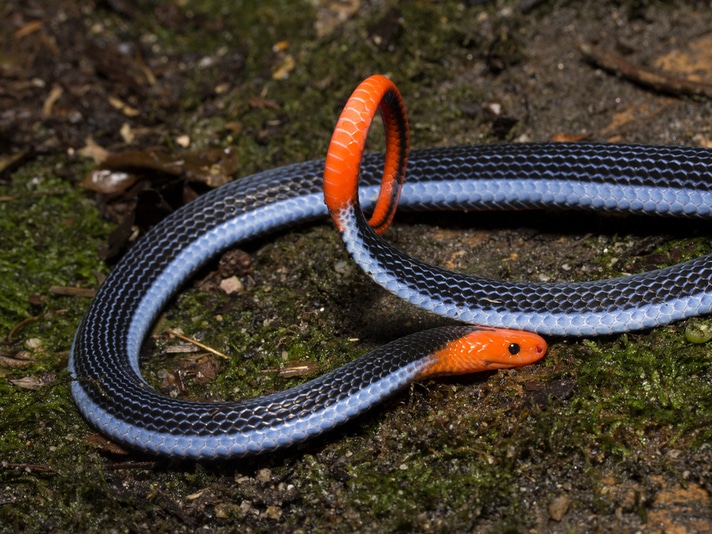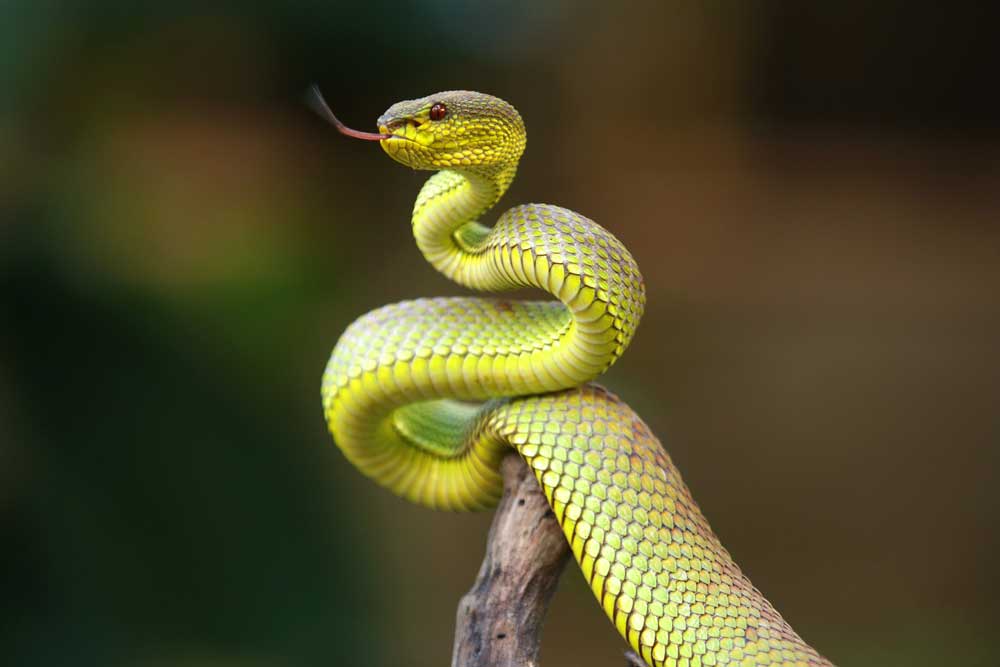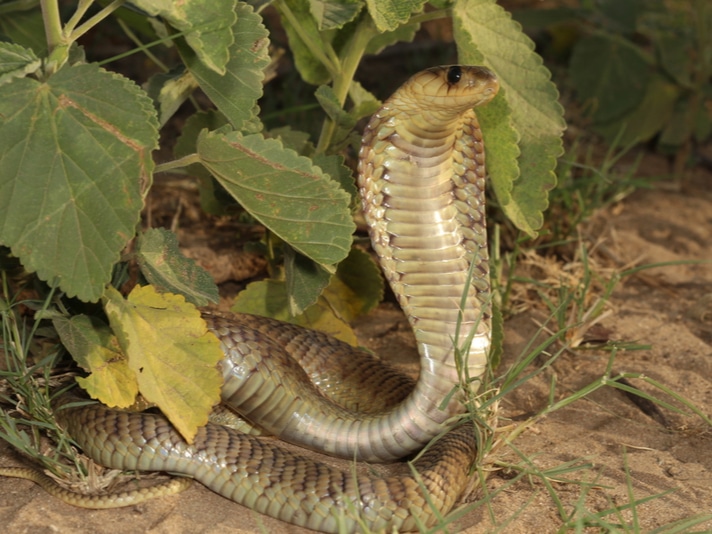While the research provided protection to the mice, the next step is to test the cocktail on dogs that are brought into veterinary clinics in Australia for snake bite treatment.
Tim Friede has been bitten or injected himself 856 times with snake venom over the course of 18 years, which a study says has led to a cocktail of antibodies that, when combined with a drug, protects mice against snakebites from 19 venomous snake species.
Snakebite antivenin is usually created with the help of horses and sheep, which are injected with snake venom and the antibodies produced from the injection are collected to create the antivenin. Scientists with Centivax, Inc. the company working on the antivenin, became aware that Friede has been injecting himself or has been bitten by venomous snakes over the course of nearly two decades. The scientists determined that Friede had generated antibodies that were effective against several snake neurotoxins simultaneously, which is attributed to his practice of injecting venom into his bloodstream.
Prior to Friede injecting himself with snake venom, the late Bill Haast did the same thing. Haast was bitten by venomous snakes some 172 times by the year 2008, and according to the New York Times, donated a pint of his blood in an effort to to save the life of a boy who had gotten bitten a venomous snake. Haast died in June 2011 at the age of 100.

The long-glanded blue coral snake grows to about six feet in length and feeds primarily on juvenile king cobras, kraits and other snakes. Vince Adam/Shutterstock
“What was exciting about the donor was his once-in-a-lifetime unique immune history,” Jacob Glanville, lead author of a study that details the injection regimen and the potential creation of a so-called universal antivenin. “Not only did he potentially create these broadly neutralizing antibodies, in this case, it could give rise to a broad-spectrum or universal antivenom.”
The researchers created a test panel using 19 of the world’s deadliest snakes, according to the World Health Organization. These included coral snakes, mambas, cobras, taipans, and kraits. They then isolated target antibodies from the blood of Friede that reacted with neurotoxins from the snakes and tested the antibodies in mice that were envenomated from each species in the test panel. This, according to the paper, enabled the scientists to build a cocktail comprising a sufiicient number of components to render the venoms ineffective.
The scientists then created a cocktail that comprised two antibodies that came from Friede and the molecule. This antibody, called LNX-D09 protected the mice from a lethal dose of whole venom from six snake species in the test panel. The scientists then added a toxin inhibitor molecule called varespladib to the mixture. This resulted in an extra level of protection against three more venomous snake species. The researchers added a second antibody that was isolated from Friede called SNX-B03, which the scientists say extended protection across the full panel of venomous snakes tested.
“By the time we reached 3 components, we had a dramatically unparalleled breadth of full protection for 13 of the 19 species and then partial protection for the remaining that we looked at,” Glanville said. “We were looking down at our list and thought, ‘what’s that fourth agent’? And if we could neutralize that, do we get further protection?”

The researchers hope to create an antivenin against snakes of the Viperidae family. Green mangrove pit viper. Photo by Mufti Adi Utomo/Shutterstock
While the research provided protection to the mice, the next step is to test the cocktail on dogs that are brought into veterinary clinics in Australia for snake bite treatment.
While the researchers focussed solely on elapids, they wish to extend the study to snakes of the Viperidae family.
“We’re turning the crank now, setting up reagents to go through this iterative process of saying what’s the minimum sufficient cocktail to provide broad protection against venom from the viperids,” lead author Peter Kwong, Richard J. Stock professor of medical sciences at Columbia University Vagelos College of Physicians and Surgeons and formerly of the National Institutes of Health said in a press release detailing their findings. “The final contemplated product would be a single, pan-antivenom cocktail or we potentially would make two: one that is for the elapids and another that is for the viperids because some areas of the world only have one or the other.”



